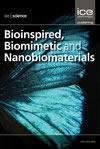生物诱导矿化处理石屑形成生物材料
IF 1.3
4区 工程技术
Q4 ENGINEERING, BIOMEDICAL
引用次数: 0
摘要
生物诱导矿化(BIM)过程中研究最广泛的分支之一被称为微生物诱导碳酸钙沉淀(MICCP),也称为微生物诱导方解石沉淀(MICP),可作为将废弃天然石颗粒重新解释为可持续材料的方法。通过克服对合成粘合剂的需求,或通过消耗能源的烧制或烧结程序来回收此类废物,通过某些生物处理工艺提出了一种自然和可持续的解决方案。本研究的目的是确定影响使用废弃石头作为支架材料的微生物诱导生物水泥生产的主要工艺变量。巴氏杆菌用于方解石沉淀的生物诱导。设计了一个定制的反应器,用于受控培养和介质注入废石支架。检测的参数包括废石块的粒径、石块类型对胶结的影响、细菌培养物的脲酶活性、培养基的温度、pH和流速、胶结支架的机械强度和吸水能力。这项研究表明,通过生物诱导矿化处理此类废物,创造可持续的生物材料,可以解决全球天然石材行业的废物产生问题。本文章由计算机程序翻译,如有差异,请以英文原文为准。
Biogenic material formation by the treatment of stone waste with biologically induced mineralization
One of the most widely studied branches of biologically induced mineralization (BIM) processes is called microbially induced calcium carbonate precipitation (MICCP) also known as microbially induced calcite precipitation (MICP) can be used as a method for the reinterpretation of waste natural stone particles into a sustainable material. By overcoming the need for synthetic adhesives or energy consuming firing or sintering procedures for regaining such wastes, a natural and sustainable solution is proposed through certain biological treatment processes. The aim of this study was to determine main processing variables affecting the microbially induced biocement production using waste stone as a scaffold material. Bacillus pasteurii bacteria are used for biological induction of calcite precipitation. A custom-made reactor was designed for controlled incubation and media injection to the waste stone scaffold. Parameters examined were particle size of the waste stones, effect of stone type on cementation, urease activity of the bacterial culture, temperature, pH and flow rate of media, mechanical strength of cemented scaffolds and water absorption capacity. This research demonstrates a potential solution towards the waste generation problem of the global natural stone industry through the treatment of such wastes with biologically induced mineralization for creating a sustainable and biogenic material.
求助全文
通过发布文献求助,成功后即可免费获取论文全文。
去求助
来源期刊

Bioinspired Biomimetic and Nanobiomaterials
ENGINEERING, BIOMEDICAL-MATERIALS SCIENCE, BIOMATERIALS
CiteScore
2.20
自引率
0.00%
发文量
12
期刊介绍:
Bioinspired, biomimetic and nanobiomaterials are emerging as the most promising area of research within the area of biological materials science and engineering. The technological significance of this area is immense for applications as diverse as tissue engineering and drug delivery biosystems to biomimicked sensors and optical devices.
Bioinspired, Biomimetic and Nanobiomaterials provides a unique scholarly forum for discussion and reporting of structure sensitive functional properties of nature inspired materials.
 求助内容:
求助内容: 应助结果提醒方式:
应助结果提醒方式:


